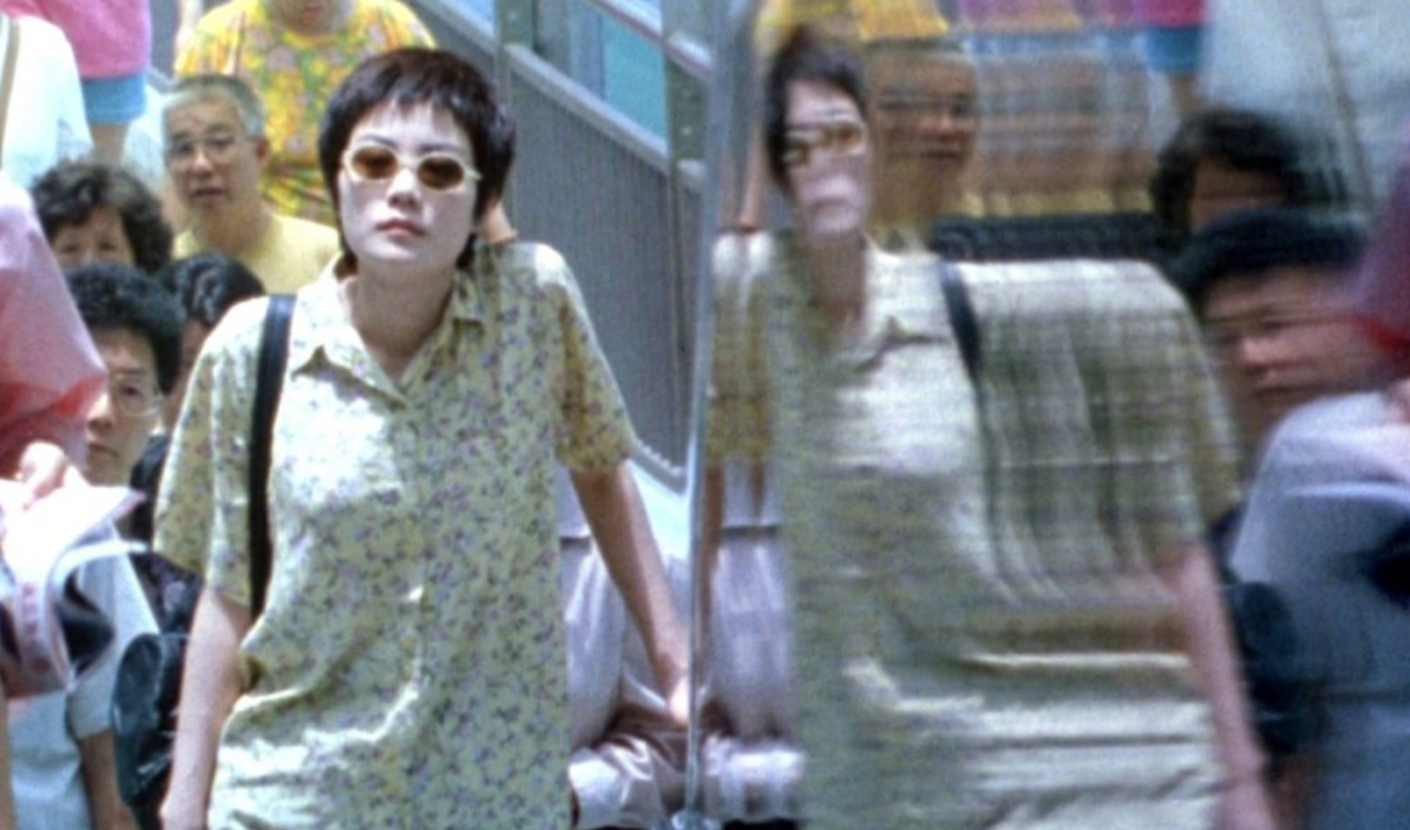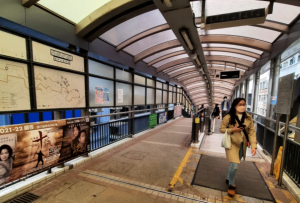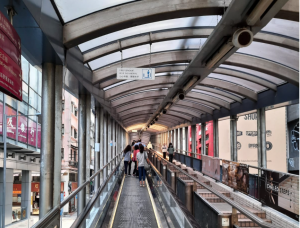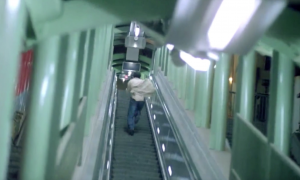[FIELDWORK] CHUNGKING EXPRESS
Directed by Wong Kar Wai in 1994
CENTRAL TO MID-LEVEL ESCALATOR, HONG KONG

Fig.1: Faye is taking the Central to the Mid-Level Escalator to cop 663’s home, Scene from Chungking Express, 1994, directed by Wong Kar Wai
“Chungking express” describes two individual storylines of lovelorn policies and the director Wong Kar Wai used his distinct movie technique to show the loneliness of urbanites in a bustling city. In the first story, Cop 223 struggled to move on after he was dumped by his girlfriend. He would buy a pineapple can that expires on May 1 every day and pretends to call as nothing has happened, meanwhile, there is an enigmatic blond hair woman who is a drug dealer facing life-threatening incidence but by the closing, they encounter each other. The next half of the movie is about Cop 663 who is experiencing heartbreak and Fye who works at the Midnight express food stand was attracted by him, soon, her passive observation turned into active action, she broke into his apartment and “reorganised” everything. These two storylines both use the central to mid-level escalator once or more in the scene, the escalator is the longest outdoor escalator that stretches over 800 meters and serves over 85,000 people per day.

Fig.2: Current picture of Central to Mid-level escalator, photograph by Matsumoto Ami


Fig.3(left): Ami is riding on the Central to Mid-level escalator, photography by Stephy
Fig.4(right): Current picture of Central to Mid-level escalator, the new and old building along the way, photograph by Ami
The experience of riding and the basic structure of the central to mid-level escalator were identical there is numerous difference between the film and reality. The most obvious difference is due to the pandemic, passenger flow is reduced and the mask on everyone’s face. Since the normal passenger flow along the escalator is huge so there are a lot of posters and advertisements along the way, which made the place more commercialised compare to the clean and empty sidewalk in the film. In contrast with the building aside, the film setting was in 1994, most of the architecture is Tong Lau and less urbanized shops like Dai Pai Dongs and fast food stand. In reality, there is a contrast of modernized and historical architecture, some of the Tong Laus are still here but most of them switch from residential to a mercantile purpose like bars, restaurants or clothing shops, also, the newly constructed building rises high over the surrounding streets and increase the density visually, the changes represent the rapid transformation in Hong Kong. Another difference is the increased artworks along the way, most of them were street art painting and the colourful vibrant colour transform the dull parts into vivid representations of our city.

Fig.5: Cop 223 just finished the call and running up the stair of the central Mid-level escalator, Scene from Chungking Express, 1994, directed by Wong Kar Wai
Director Wong uses a handheld camera to film this crowded and tense urban environment for a realistic visage that perfectly presents the loneliness as an urbanite in a bustling big city, which help emphasis the encounter between the main character. In the scene of cop 223 loss his hope on getting back with his girlfriend and he run onto the escalator, the melancholy green light aggravated his emotion and the cop 663 looking down from the bridge also contrast with the difference in heartbreak expression. Director also used some zoom in pictures to increased unspoken detail, for example, the closed sign on the escalator to show the timing. The escalator also play a momentous role in cop 663 story, cop 663’s home is next to the escalator, so Faye could band her knee and trying to look inside his home that action visualized the curiosity in her inner world and that picture has become the most iconic scene in the film.
–MATSUMOTO AMI 3035831305
Reference Note
Central to Mid-Levels Escalator data information: https://en.wikipedia.org/wiki/Central%E2%80%93Mid-Levels_escalator
Location information:https://zhuanlan.zhihu.com/p/25774590
Tracing the urban transformation through the lens of the film could be a fun exercise. Appreciate how you acknowledged the gentrification of Tong Laus and Dai Pai Dongs along the mid-level escalator. Would you think the film had represented the real condition of Hong Kong in 1994? Could you think of an alternate place if we were to shoot this scene in 2021? You also mentioned how the director portrayed a contrast between personal loneliness and a busy city. Picking up on how he did that would also help your readers to better follow your train-of-thoughts. What kind of space/angle did the director choose to represent loneliness and how was it depicted in the film? Building up your argument using one of the key ideas/concepts we discussed in the class would also help you develop a deeper and sharper analysis because it provides you with an analytical lens. Lastly, avoid citing from general sources like Wikipedia but instead refer to primary sources and class readings. In your case, you could refer to the government’s official website for basic info on the Mid-Level escalator or journal articles/conference paper which discuss the escalator.